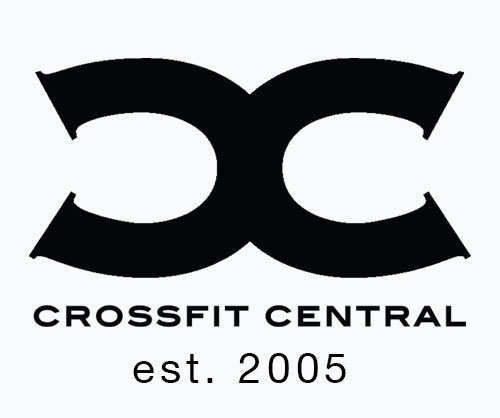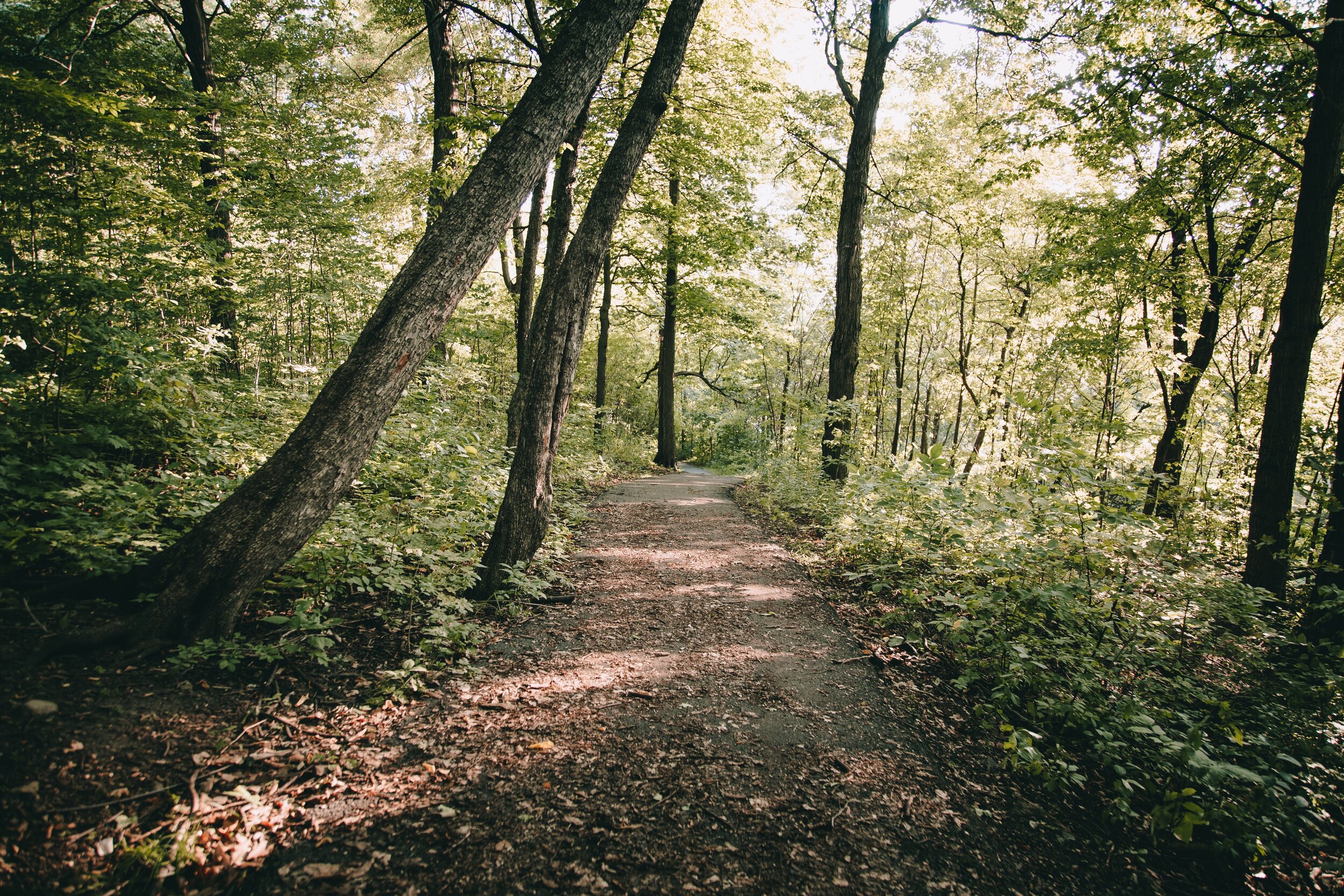Top 7 Best Hiking Trails in Austin
by Lauryn Lax
Long before barbells, kettlebells,“Met Cons” and Air Dyne bikes existed, humans used their bodies as the “machines.” They sprinted to hunt, lifted heavy loads (stones/rocks, logs, shelter materials, wildebeests), integrated primal movement regularly (ie. crawling, squatting, pushing, pulling, etc), and walked…a lot—upwards of 15,000 to 20,000 steps, or 5 to 7 miles, per day.
Humans walked under load. We carried armfuls and baskets and skins of starchy tubers, nuts, fruits, animal parts, shellfish and game. We carried children too. Shopping carts, cars, strollers, and delivery services were unavailable.
Humans walked on uneven surfaces. The natural land is not perfectly flat, linear or made of cement. very step is different than the last, and this makes walking on uneven terrain far more energetically demanding than walking on flat terrain.
Humans walked a mix of short and long distances. The occasional 3 to 7 day long haul across land happened, but more commonly humans walked short distances all day long—amping up their mileage: A few hundred yards to gather wood for the morning fire; A mile at midday to fetch water at the watering hole; a walk to stake out hunt or gather nuts and fruits for the next several days of food.
In short: Walking is hardwired in your physiology to do daily.
Sitting Disease: It’s a Thing
Unfortunately, the average American sits approximately 12+ hours per day, and research shows even if you do hit the gym regularly, all that sitting may sabotage your workouts and increase your risk for blood sugar and metabolism imbalances, autoimmunity and inflammation.
One study at the University of Texas (Akins et al, 1985) observed what happened to 10 moderately active graduate students when they sat still for 4 days in a row. They also tweaked their diets slightly, consuming fewer calories to prevent weight gain, which may have changed their metabolisms, separately from the sitting.
On the 5th day, the volunteers visited the university’s human performance lab where they ate a breakfast shake made of half-and-half and ice cream and the researchers monitored their blood for triglycerides, blood sugar and insulin for the next six hours.
The 10 volunteers repeated the trial one more time—sedentary lifestyle for 4 more days, and on the evening of the 4th day, they returned to the lab where they exercised—running on a treadmill. Researchers again monitored their blood for triglycerides, blood sugar and insulin for the next six hours.
The results?
The 4 days of sedentary lifestyles left the students with somewhat sluggish, overtaxed metabolisms. Even hours after their milkshake breakfast, they displayed high levels of triglycerides and blood sugar and low insulin sensitivity. Likewise, the exercise did not seem to help. The students’ triglycerides and blood sugar levels were no better on the morning after they had run, suggesting that being sedentary for long periods of time may create conditions in our bodies that make us resistant to positive metabolic changes after exercise.
How is Your NEAT Activity?
NEAT or “Non-exercise activity thermogenesis” or “non-planned exercise” is the energy expended for everything we do that is not sleeping, eating or fitness-like exercise. It ranges from the energy expended walking, to work, standing, yard work, cooking, shopping, playing, chores, sitting on a stability ball at work, stretching, taking the stairs, fidgeting and…hiking.
While it might not seem like much, NEAT has a substantial impact on our metabolic rates and daily calorie expenditures. For example, study observed 12,000 women for 12 years and found that fidgeting may reduce the risk of death associated with excessive sedentary time.
How is your NEAT activity—your daily movement?
Take advantage of your time outside the gym this fall by hitting one of these amazing Austin “hot spot” hiking trails, and remember: your body was made to move, not exercise.
The Top 7 Best Hiking Trails in Austin
1. Walnut Creek Trail
Address: 5200 Bolm Rd., Austin, TX 78721
About: Entails more than 7.3 miles of multi-use trail running by trees, flatland, soft hills and water, with featured 10-foot wide concrete paths and both Govalle Park and the Walnut Creek Sports Park.
Fun Fact: The future of Walnut Creek regional trail will be a major east Austin connection to other planned regional trail systems including the Colorado River and Onion Creek Trails and will connect in the future to the Northern Walnut Creek Trail that will begin at Balcones Park and connect to the Walnut Creek Metropolitan Park.
2. River Place Nature Trail
Address: 8820 Big View Dr
About: If you want a good “butt workout”, you definitely don’t want to miss River Place. River Place boasts 3 trails in one location to keep things interesting, including: Little Fern, Canyon, and Panther Hollow, and of the 3 trails, the Canyon Trail is the “top dog” of the River Place trail system, extending 2.3 miles with 400 feet of stairs and elevation change. Hike it in the reverse direction, and you’ll get a whopping 900 feet of accumulated climbing.
Little Fern Trail is the most scenic trail in the system consisting of 0.5 miles, and Panther Hollow is a flat 0.5 mile trail perfect for children, walkers who don’t regularly hike and a stroll with the pups.
Fun Fact: Many River Place trail regulars use the Canyon Trail as a training course to prepare for popular strenuous hikes such as the Grand Canyon and Guadalupe Peak. For example, doing two out-and-backs of the Canyon Trail will give you 9.2 miles and 2600’ feet of climbing, a good simulation of the Guadalupe Peak trail which is a round trip of 8.5 miles with 3000’ of climbing.
3. Barton Creek Greenbelt
Address: 3755 S Capital of Texas Hwy B, Austin, TX 78704
About: Although are multiple greenbelts in Austin, but the Barton Creek Greenbelt is so beloved that locals commonly refer to it as “the Greenbelt,” as if it were the only one. . Located in south-central Austin, the Barton Creek Greenbelt contains 12.68 miles of gorgeous trails, with the main trail spanning about 7 miles.
Fun Fact: The Greenbelt is not only for hiking. It is also filled with mountain biking trails, beautiful limestone bluffs for rock climbing, and, when there’s enough water in the creek, there are several swimming holes to enjoy.
Other Access Points:
4. McKinney Falls State Park
Address: 5808 McKinney Falls Pkwy
About: Think of the park as Austin’s backyard—13 miles from the state capitol. Here you can camp, hike, mountain or road bike, boulder, fish, swim, and picnic. The trail is a total of 6.8 miles and worth the small park fee to get in the door.
Fun Fact: There is evidence that hunter-gatherers occupied the land that is now McKinney Falls State Park at least five thousand years ago, maybe more. The tribes found water in the creek and protection among the rock shelters created by the same undercutting action that formed the falls.
5. Turkey Creek Trail @ Emma Long Park
Address: 1600 City Park Rd, Austin, TX 78730
About: A 3-mile hike with amazing scenery. It’s moderate in difficulty and includes some additional side trails to explore. The pathway crosses over water creeks multiple times, so consider bringing water shoes if you’re hiking during rainier months. Another bonus for dog owners: this is an off-leash park!
Fun Fact: In 1984, the Austin City Council renamed the park (originally Bastrop State Park) after Emma Long, a former Austin City Council Member. Long was the first woman to serve on the council of a large city in Texas. She also served as the first woman Mayor Pro Tem from 1967-1969.
6. Violet Crown Trail
Address:
About: 6 miles of scenic, natural trail currently exist, with expansion rapidly progressing. In 2006, planning of the Violet Crown Trail began. Its purpose is to create the first regional trail system in Central Texas. Once complete, the 30-mile trail will provide a unique recreational experience as it passes through the urban wildlands of the Barton Creek Wilderness Park, the City of Sunset Valley, and eventually into Hays County.
Fun Fact: Ever wonder why Austin is called the “Violet Crown” city? According to the City of Austin's History Center, the phrase first appeared in The Austin Daily Statesman (Now the Austin American Statesman) on May 5th, 1890, and affectionally characterizes Austin as a picturesque city with an ambient atmosphere and full of light.
7. Lady Bird Lake (“Townlake”)
Address: 800 W. Riverside Drive
About: Of course you know about it, but we couldn’t resist. The 10 mile “Central Park” trail in the middle of our beautiful city is the “Mecca” of Austin—where all the Austinites flock to walk, talk, bike and hike.
There are multiple spots to park for trail access aside from the Riverside Drive lot location including:
By Austin High School and underneath the Mopac Bridge: 1717 W Cesar Chavez St, Austin, TX 78703
Zilker Park: 2100 Barton Springs Rd, Austin, TX 78704
Near the Seaholm Project, by Epoch Coffee: 111 Sandra Muraida Way #101, Austin, TX 78703
Auditorium Shores: 900 W Riverside Dr, Austin, TX 78704
The Boardwalk on the Eastside: 1820 S Lakeshore Blvd
Shoal Creek Greenbelt: 2600 N Lamar Blvd (Eventually, this 3.7-mile trail will connect to the Lady Bird Lake Trail at Shoal Beach so long distance runners can have a party)
Fun Fact: If you want to sound like a real Austinite, call it “Town Lake”—the original name of the trail. On July 26, 2007, the Austin City Council passed a controversial resolution authorizing the renaming of the reservoir from Town Lake to Lady Bird Lake in honor of Lady Bird Johnson, who had died earlier that month. Johnson had declined the honor of having the lake renamed for her while she was alive.
Check ‘Em Out
For a full list of local trails, check out the Austin Parks & Recreation Trail Directory here: https://www.austintexas.gov/page/trail-directory
Other cool websites include: Nature Rocks Austin https://www.naturerocksaustin.org/greenspace and Do512 https://do512family.com/category/hikes-trails/.

